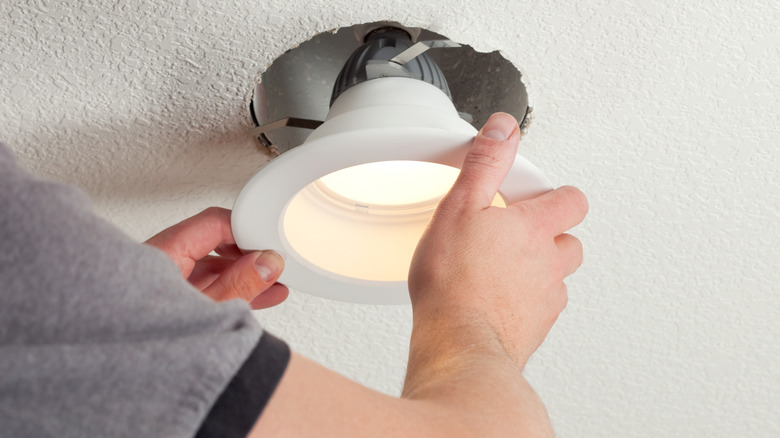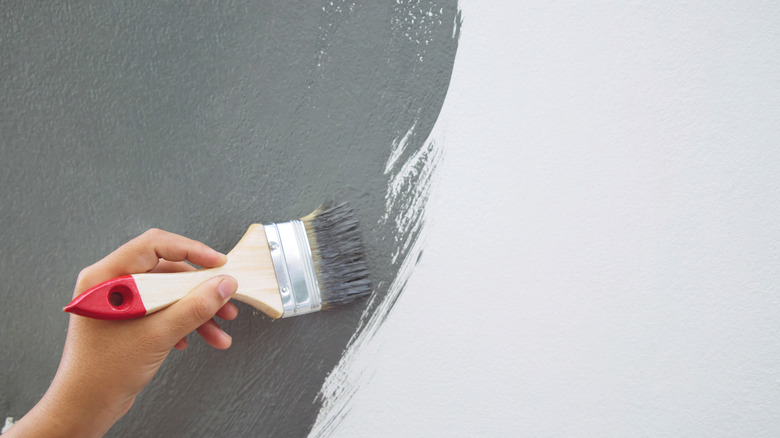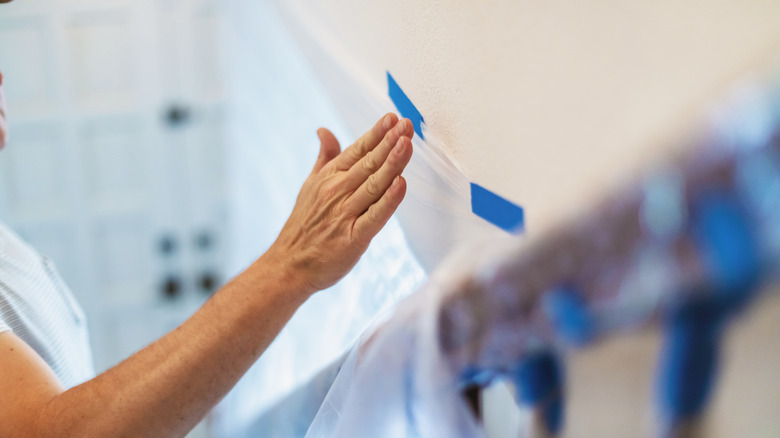Painting Vs. Light Fixture Installation: What's The Right Order?
The age old question: Install the light fixture or add the final layer of paint last? The confusion surrounding this dilemma creates varied opinions, so we reached out to Van Sureja, owner and president of Liberty Painting, for a definitive answer. In an exclusive exchange with Sureja, he noted, "Doing most of your painting before installing fixtures and hardware gives you a chance to thoroughly and more evenly cover surfaces without excessive masking."
The expert went on to suggest that readers "consider doing all [their] heavy painting ahead of installation and performing the final touches at the end." This will help make the whole process a lot easier and more streamlined, allowing paint to dry properly and getting rid of the need for painting around tricky shapes after install. However, just like wondering if you should paint before or after installing cabinets, trim, or flooring, deciding the order with regard to a light fixture will partly depend on how you weigh the pros and cons.
The trade-offs of painting before or after installation
Chatting exclusively with House Digest, expert Van Sureja said, "Waiting to apply a full final coat could ensure that your lines are cleaner and work isn't wasted due to damage caused by installing large items like mirrors and towel bars, but it also requires more masking and can make it difficult to access certain areas." If masking is one of those tasks that you consider a tedious addition to your renovations, it's probably more ideal to paint before adding the final fixture. However, Sureja adds, "You run the risk of an inconsistent finish and lots of frustration."
In many cases, painting a room is about making everything more uniform. So approaching it improperly could cause the space to seem chaotic or messy. That's an issue you might especially try to avoid with a bathroom, for example. As Sureja noted, "A quality bathroom paint job is all about balance. You want to be efficient and tidy while also being thorough and consistent."
The order of painting and installation may vary
Should you know going into a project that your last layer of paint may not come out as smooth as it would pre-installtion, it may be worth adding this layer before you begin working on your lighting. Van Sureja explained, "Completing most of your painting ahead of installation can protect fixtures from paint splatters and make the job faster and easier, but you'll still need to account for damage and mistakes, caulking and patches, and your overall final design aesthetic." Even when you're just replacing a light fixture, you may want to paint before adding the new one to cover up marks from the process.
Sureja further remarked that you may want to add a layer of paint after you've made installations "if you're only changing certain aspects of the bathroom and don't mind lots of masking." It's also important to avoid common masking tape issues that leave marks and damage your walls (such as peeling the tape prematurely), or you'll have to deal with another coat of paint after removing it. However, he suggests that if the renovation is a "full overhaul or you're working on a new build, painting first is probably a good option for you." Sureja's final words for readers from his exclusive House Digest interview are that "there's no one right answer, so find the approach that makes the most sense for your specific project!"


